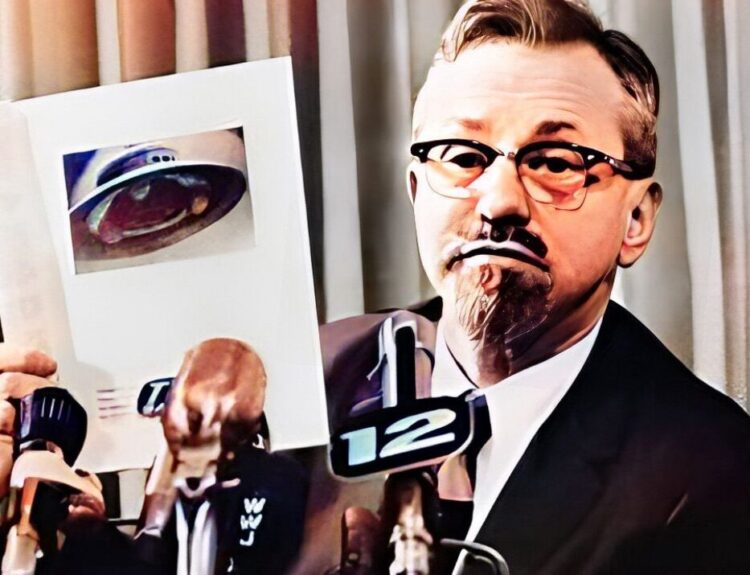The story of MK Ultra is one of the most disturbing chapters in the history of covert government operations. It is a tale of secrecy, manipulation, and the abuse of power—where the boundaries of ethics were obliterated in the name of national security. This clandestine program, initiated by the CIA during the Cold War, sought to explore and exploit the limits of the human mind, often with devastating consequences. As the veil of secrecy has slowly lifted over the years, the full horror of MK Ultra’s activities has begun to come into focus, leaving a legacy of mistrust and unanswered questions.
Origins of MK Ultra
MK Ultra, officially sanctioned in 1953 under the directive of CIA Director Allen Dulles, was a top-secret program aimed at developing mind control techniques. The backdrop was the intense paranoia of the Cold War era, where the United States and the Soviet Union were locked in a battle for global supremacy. The early 1950s were a time of deep fear and suspicion, with concerns that communist adversaries might be using mind control methods on American prisoners of war and defectors. This fear was not unfounded—there were reports that the Soviets, Chinese, and North Koreans were experimenting with various psychological techniques, sparking the CIA’s interest in developing their own methods.
The CIA’s mission was clear: to explore the frontiers of the human mind and develop techniques that could be used for intelligence purposes. This included everything from interrogation and brainwashing to more insidious methods of controlling or incapacitating enemies. MK Ultra was part of a broader project known as “Project Artichoke” and later “Project Bluebird,” which sought to explore whether a person could be coerced into performing acts against their will, including assassinations.
Methods and Experiments
The methods employed under MK Ultra were as diverse as they were unethical. The program’s architects were willing to push the boundaries of human endurance and ethical norms, using a combination of drugs, psychological torture, and extreme physical conditions. These experiments were often conducted without the knowledge or consent of the subjects, raising profound ethical and moral concerns.
LSD Experiments: One of the most infamous aspects of MK Ultra was the testing of LSD (lysergic acid diethylamide). The CIA believed that the drug could be used as a truth serum or even as a tool to control or disable enemies. However, the administration of LSD was often done without the knowledge or consent of the subjects, leading to severe psychological trauma and, in some cases, death. The CIA conducted these experiments on a wide range of subjects, including soldiers, prisoners, and even civilians. The agency also secretly funded research at universities and hospitals, where unsuspecting patients were dosed with the drug. Some were subjected to prolonged periods of isolation and sensory deprivation while under the influence of LSD, leading to lasting psychological damage.
Hypnosis and Suggestion: Another major focus of MK Ultra was the use of hypnosis and suggestion. The CIA sought to determine whether individuals could be hypnotized and compelled to carry out specific actions against their will, including committing acts of violence. The agency conducted numerous experiments to explore the potential for creating “Manchurian candidates”—individuals who could be programmed to carry out assassinations or other acts without conscious awareness. These experiments often involved deep hypnosis, combined with drugs and other psychological techniques, to see if the human mind could be effectively controlled.
Sensory Deprivation and Isolation: The program also experimented with extreme forms of sensory deprivation and isolation, designed to break down the human psyche and render subjects more susceptible to suggestion. Subjects were placed in isolation tanks, where they were deprived of all sensory input for extended periods. This led to hallucinations, disorientation, and a profound sense of helplessness. The goal was to see if individuals could be made more pliable and open to manipulation in a state of sensory deprivation.
Electroshock Therapy: Electroshock therapy was another tool in the MK Ultra arsenal. The CIA believed that by subjecting individuals to high-voltage electric shocks, they could erase memories and create a “blank slate” on which new behaviors could be imprinted. This was part of the broader goal of creating mind-controlled operatives or agents who could carry out missions without conscious awareness. The use of electroshock therapy was often combined with other forms of psychological torture, including drugs and hypnosis, to see if the human mind could be completely reprogrammed.
Biological and Chemical Agents: In addition to LSD, the CIA experimented with a variety of other drugs, including barbiturates, amphetamines, and other psychoactive substances. The agency was particularly interested in the potential of these drugs to alter perception and behavior, as well as their use in interrogation. Some of these experiments were conducted on unwitting subjects, including patients in mental institutions and prisoners. The agency also explored the use of biological and chemical agents as weapons, conducting tests to see if they could incapacitate or kill targets without leaving any trace.
The Victims
The victims of MK Ultra were as varied as the methods employed. Prisoners, mental patients, soldiers, and even ordinary citizens were subjected to these experiments. The lack of informed consent and the often brutal nature of the experiments led to severe psychological and physical harm for many of those involved. Some victims were left with lasting trauma, while others lost their lives as a result of the experiments.
Frank Olson: One of the most tragic and well-known cases was that of Frank Olson, a CIA scientist who was dosed with LSD without his knowledge during a retreat in 1953. Olson’s behavior became increasingly erratic after the incident, and he expressed a desire to leave the CIA. Just days later, Olson died after falling from the window of his New York City hotel room. While his death was officially ruled a suicide, many believe that he was murdered to cover up the program. Decades later, Olson’s family would seek justice, and in 1975, the U.S. government officially apologized and provided a financial settlement to his family.
Institutions Involved: In addition to individual victims, entire institutions were implicated in MK Ultra. Hospitals, universities, and even pharmaceutical companies unwittingly participated in the program, providing subjects and resources for the CIA’s experiments. Institutions such as McGill University in Canada and Stanford University in the United States were involved in some of the most notorious experiments. The CIA often used front organizations and funding cutouts to conceal its involvement, making it difficult for anyone to trace the origins of the research. Many of these institutions later faced public scrutiny and legal challenges as the details of MK Ultra came to light.
Collateral Damage: The collateral damage of MK Ultra extended far beyond the direct victims of the experiments. The program contributed to a culture of fear and suspicion within the intelligence community and the broader public. The secrecy surrounding MK Ultra, combined with the shocking nature of the experiments, led to widespread mistrust of the government and its agencies. This legacy of distrust continues to shape public attitudes toward intelligence operations and government transparency.
Exposure and Aftermath
MK Ultra remained shrouded in secrecy for decades, with the true extent of its operations coming to light only in the 1970s. The revelations came during the Church Committee hearings, where it was revealed that the CIA had destroyed most of the records related to the program in 1973, on orders from then-CIA Director Richard Helms. What little information remains is fragmentary, pieced together from surviving documents and testimonies from those involved.
The Church Committee Hearings: The Church Committee, led by Senator Frank Church, was a pivotal moment in the exposure of MK Ultra. The committee was established in response to growing concerns about the activities of the CIA and other intelligence agencies. During the hearings, it was revealed that the CIA had engaged in numerous unethical activities, including the widespread use of drugs on unsuspecting subjects, illegal surveillance, and assassination plots. The committee’s findings led to significant reforms within the intelligence community, including the creation of the Senate Select Committee on Intelligence to provide greater oversight.
Destruction of Evidence: The destruction of most MK Ultra records in 1973 has left significant gaps in our understanding of the program. The CIA’s decision to destroy the documents was a deliberate attempt to cover up the program’s activities and prevent further investigation. As a result, much of what we know about MK Ultra comes from the testimonies of former operatives, surviving documents, and the accounts of victims. This incomplete record has made it difficult to fully assess the scope and impact of the program.
Legal and Ethical Implications: The exposure of MK Ultra sparked outrage and led to calls for greater oversight of intelligence agencies. It also highlighted the dark underbelly of government operations, where the pursuit of power often eclipsed the rights and well-being of individuals. In the years following the Church Committee hearings, there were numerous legal challenges brought by victims and their families, seeking compensation for the harm they had suffered. Some of these cases resulted in financial settlements, while others were dismissed due to the lack of evidence or the expiration of the statute of limitations.
The Legacy of MK Ultra
The legacy of MK Ultra is a cautionary tale of what can happen when power is unchecked and ethical boundaries are disregarded. It serves as a reminder of the potential for abuse inherent in secretive government programs and the importance of transparency and accountability. The revelations about MK Ultra have had a lasting impact on public perceptions of the CIA and other intelligence agencies, contributing to ongoing debates about the role of secrecy and oversight in government.
Cultural Impact: MK Ultra has also left a significant mark on popular culture. The program has been referenced in countless books, movies, and television shows, often serving as a symbol of government overreach and the dangers of unchecked power. The concept of mind control, particularly in the context of secret government experiments, has become a staple of conspiracy theories and speculative fiction. The legacy of MK Ultra continues to fuel discussions about the ethics of government research








